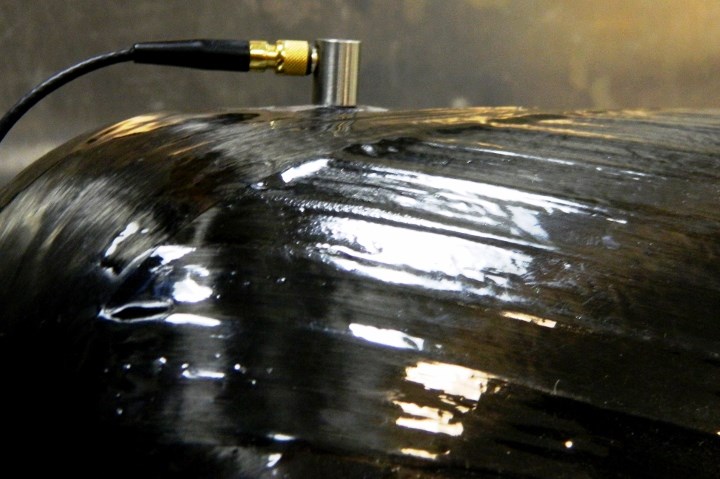Hexagon Digital Wave requalifies Type IV cylinders for RNG/CNG transportation module OEM
Requalification is performed via modal acoustic emission (MAE) which identifies structural integrity flaws present in composite pressure vessels, enhancing safety and testing standards.

Photo Credit: Hexagon Digital Waves
Hexagon Digital Wave (Centennial, Colo., U.S.), a business of Hexagon Composites (Alesund, Norway), has signed a commercial service agreement with a North American Type IV renewable and compressed natural gas (RNG/CNG) transportation module OEM. More specifically, the agreement covers modal acoustic emission (MAE) requalification of the OEM’s RNG/CNG modules, which is set to begin in Q3 2021. According to Hexagon Digital Wave, MAE enables the requalification of Type IV composite cylinders without removal from the module, resulting in reduced downtime and operator overhead. The commercial service agreement has a potential value of $2 million (approximately NOK 17 million).
“This commercial service agreement is another step in creating a unified expectation of safety and testing standards in the gaseous transport industry,” says Ryan Pennock, head of marketing and business development at Hexagon Digital Wave. “Our goal is to create a benchmark in digital safety in the compressed gas transportation sector, a vision OEMs, operators and end users alike will benefit from. Signing this commercial service agreement is another step on this journey.”
MAE uses advanced electronics and sensors that capture broadband waveforms and specialty algorithms to identify if there are any structural integrity flaws present in composite pressure vessels. MAE is compliant to the Department of Transportation/Pipeline of Hazardous Materials Safety Administration and Transport Canada regulations. Testing using the MAE technology eliminates venting of contents to the atmosphere, thereby minimizing environmental impact.
Hexagon Digital Wave adds that a significant increase in customer demand for compressed gas transport is driving module owners to seek safe, yet time-efficient methods of cylinder requalification. The company’s MAE technology is said to meets these needed requirements, and when deployed alleviates pain points for owners/operators and module OEMs alike.
Related Content
-
Honda begins production of 2025 CR-V e:FCEV with Type 4 hydrogen tanks in U.S.
Model includes new technologies produced at Performance Manufacturing Center (PMC) in Marysville, Ohio, which is part of Honda hydrogen business strategy that includes Class 8 trucks.
-
Composites end markets: Batteries and fuel cells (2024)
As the number of battery and fuel cell electric vehicles (EVs) grows, so do the opportunities for composites in battery enclosures and components for fuel cells.
-
Infinite Composites: Type V tanks for space, hydrogen, automotive and more
After a decade of proving its linerless, weight-saving composite tanks with NASA and more than 30 aerospace companies, this CryoSphere pioneer is scaling for growth in commercial space and sustainable transportation on Earth.











.jpg;maxWidth=300;quality=90)

